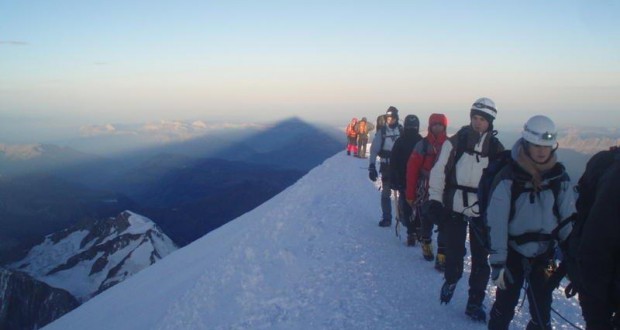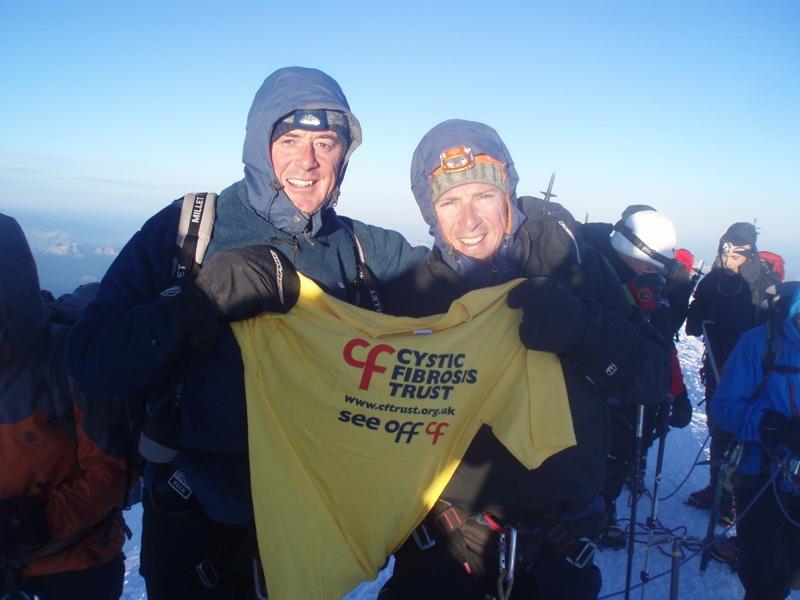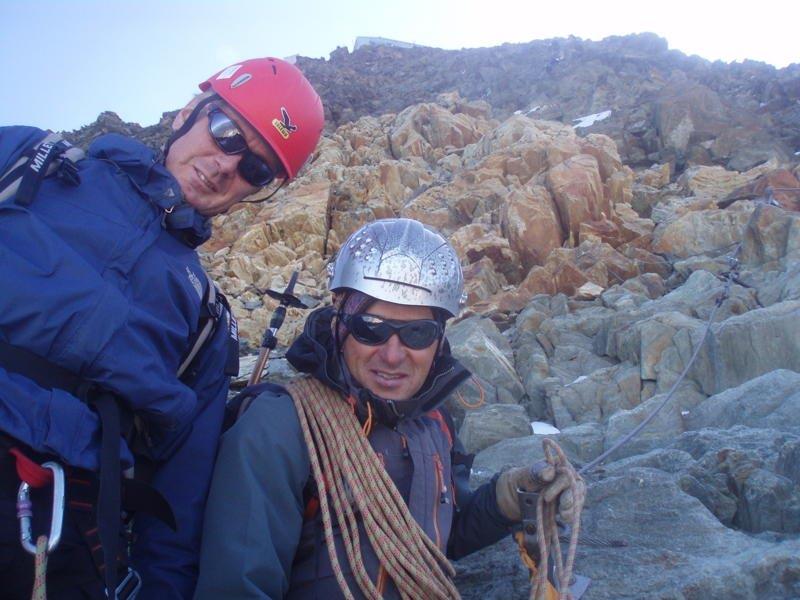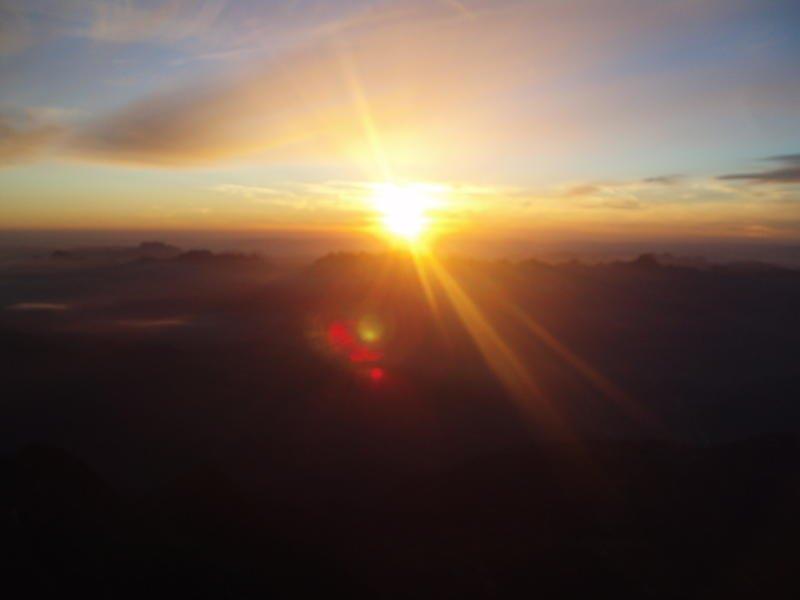From Sally Ann Voak in Chamonix
Beware adventure websites offering to escort you up 4819m Mont Blanc implying that, with a few gym lessons then a week-long £1500 training course you could scale this awesome peak, where scores of climbers die every year.
This does not put off climbers trying the two-day ascent of Western Europe’s highest peak but warning – We have tried it and you must be in great shape with climbing experience. And ready to work your sox off!
I have just interviewed two English chaps who did it – chalet company boss Tom Ward-Lee and friend Nick Morrissey from the nearby Grand Massif, where they ski, climb and hike. Yet they agree that the ascent was the most difficult thing they have ever done.
Tom said: ”We trained six months with local guide James Monet, from Sixt-Fer-à-Cheval, who took us for a two-hour long hike every week, graduating to eight. Then we went above 4000m to check our altitude reactions, which were fine.
“Then it was rock climbing, glacier practice with crampons and ice axe, biking, and fitness improvement.”
Tom continued:”Then the big day came. A hike to the first refuge, then 4-5 hour scramble, roped together. One area, Le Grand Couloir, is very steep, made of slate, and 30-40 metres wide.
“People cross above you, sending pieces of slate down on you, so get your timing right, and never hang around, as this is the Corridor of Death. You see Chamonix 4,000m below, one slip and you’ve had it.“
Day 2 sees you join 200 others at 3.30am to reach the summit.
“You climb hours in pitch black and freezing cold, then sunrise at the top is incredible and the view spectacular but very, very cold!
“Job done spend 15 hours walking down, roped together; an incredible experience.”
The pair raised £3800 for the Cystic Fibrosis Trust. Tom runs villa letting firm in Samoens. www.AlpsAccommodation.com
Guide James Monet, advises climbing Mont Blanc in the season – August and September but insists you get in shape first with cardio, endurance and some climbing. Cycling and hill hiking too. And ensure your guide has the UIAGM (Union Internationale des Associations de Guides de Montagne) diploma, and if French, is afficiated to Syndicat National des Guides de Montagne.
Check your pre-climb training schedule. Most bureaux guides will give you the following: rock and ice climb training (cord, axe, crampons) and at high altitude (acclimatisation, practical, fitness etc).
2. Be aware that you might fail the course: “No two people react the same way to high altitude conditions,” says James “Even the physically fit can have problems.”
To find out more, take a trip to the Grand Massif this summer and meet James on August 2 at Sixt, when the Compagnie des Guides de Sixt celebrate their 150th anniversary. www.guidessixt.com
 Good Ski Guide The Worlds Most Loved Ski Guide
Good Ski Guide The Worlds Most Loved Ski Guide




